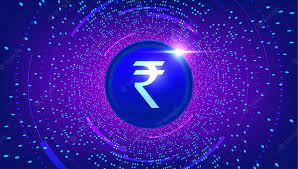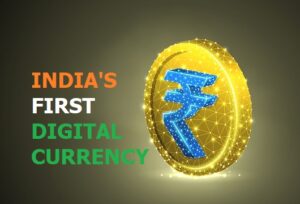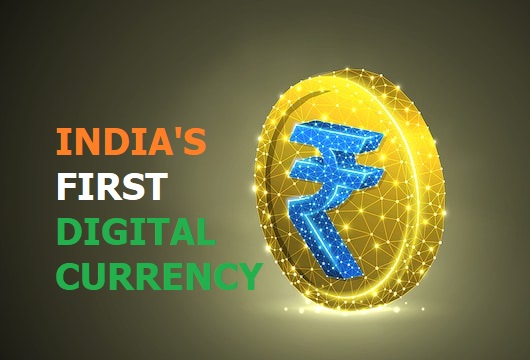How To Write A Project On India’s First Digital Currency?
How To Write A Project On India’s First Digital Currency? India’s First Digital Currency Project is all about developing ways to achieve social and economic progress. Students of classes X & XII are given this topic so that they can share their knowledge and foster the spirit of perseverance. Moreover, It also helps in developing confidence and managing obstacles more efficiently. By doing such projects, students learn to implement their theoretical knowledge in practical aspects. Such projects are multidisciplinary in nature because students are required to solve real-world problems by applying knowledge from different disciplines. Therefore, keep your project on “India’s first digital currency” simple and to the point.
How To Write a Project On Globalization And It’s Impact On Economic Development Worldwide
Table Of Contents:
- Acknowledgment
- Certificate
- Index
- Introduction
- What is Digital Currency?
- How does Digital Currency Work?
- What are the advantages of digital currency?
- What are the disadvantages of digital currency?
- India’s First Digital Currency and its Impact on the Economy
- Conclusion On India’s First Digital Currency
11-Point Project On Consumer Awareness
Things to be kept in mind while doing the project
(Follow CBSE guidelines strictly.)
- Firstly, USE A-4 size file paper (one side ruled) and blue/black ink to write your project.
- Secondly, design the cover page in such a way that it reflects your topic.
- Thirdly, write the Topic of the project, Name, Class, and Sec, Roll no. on the cover page in bold letters.
- Fourthly, however, the project work should not be less than 10 pages (including the cover page)
- Lastly, do not use plastic covers.
How to Make Your Project On US Recession 2023 Look Amazing In 5 Days
Before Hand Preparation For Your Project On India’s First Digital Currency?
To write a project on India’s first digital currency, you will need to do some research and gather information on the topic.
Here are some steps you can follow:
- Firstly, Research the current state of digital currency in India
- Secondly, Study the global digital currency landscape
- Thirdly, Identify the key players
- Outline the project
- Write the project
- Review and edit
- Finally, Cite your sources.
How To Write A Project On India’s First Digital Currency?

Project On India’s First Digital Currency
Page No. 1 Acknowledgement:
(what should be written) see the example below.
Acknowledgment
From the core of my heart, I am very thankful to everyone who all supported me, for I have completed my project effectively and moreover on time. I am overwhelmed in all humility and grateful to acknowledge my depth to all those who helped me to put these ideas well. equally grateful to my (NAME OF SUBJECT TEACHER) for giving me moral support and guidance in doing this project. It would be an injustice if I do not thank my parents who helped me a lot in collecting data, pictures, and continuous help and support.
With their able guidance, encouragement, and support, I could complete my project on time.
Thanking you,
(Name of the student)
Page No. 2 Certificate:
Project Certificate Format
Certificate
This is to certify that
Your Name………………………. of class X (your Sec) …B…….
has successfully completed his/her project on the topic
“ India’s First Digital Currency ”
as prescribed by Mr./Miss/Mrs./Prof……….(teacher’s name)………. during the
academic year….(year)……. as per the guidelines
given by…..(department/Institution/Board name)…….
Signature of Teacher Sign of external
Page No. 4: Index
Do not forget to add an index page along with Page No.
How To Write A Project On India’s First Digital Currency?

Page No. 4: Introduction
Firstly, the project aims to explore the current state of digital currency in India.
Secondly, India’s first digital currency is a relatively new concept that is gaining traction in the country.
Thirdly, the Reserve Bank of India (RBI) launched India’s first digital currency this year.
Moreover, with the increasing adoption of digital technology and growing demand for more efficient and secure financial transactions, digital currencies have emerged as a viable alternative to traditional fiat currencies.
However, the Indian government has been cautious in its approach to digital currencies.
Reserve Bank of India (RBI) issued warnings about the potential risks associated with their use.
However, the government has also acknowledged the potential benefits of digital currencies and has set up a panel to explore their use and potential regulation.
Page no. 5: What is Digital Currency?
Digital currency, also known as cryptocurrency, is a form of currency that exists solely in digital form.
Unlike traditional fiat currencies, which are issued and controlled by governments, digital currencies are decentralized and typically use blockchain technology to maintain a secure and transparent ledger of transactions.
Some examples of digital currencies include Bitcoin, Ethereum, and Litecoin.
These currencies can be bought and sold on various online exchanges, and can also be used to make transactions, such as purchasing goods and services.
Digital currencies can also be used as an investment, as their value can fluctuate significantly based on market demand and other factors.
Digital currencies have some unique features such as fast transactions, low transaction fees, and peer-to-peer transactions, which makes them different from traditional currencies.
They are also not backed by any physical commodity and their value is determined by market supply and demand.
Overall, digital currencies have the potential to revolutionize the way we think about money and financial transactions, but they also come with their own set of risks and challenges.
Clear And Unbiased Facts About Project On Global Warming
Page No. 6: How does Digital Currency Work?
Digital currencies, also known as cryptocurrencies, work through the use of blockchain technology.
Blockchain is a decentralized, digital ledger that records transactions on multiple computers, making it difficult to tamper with or manipulate.
How do digital currencies work?
Transactions:
When a digital currency transaction is made, it is broadcast to the network of computers that make up the blockchain.
These computers, known as nodes, work together to validate the transaction and add it to the blockchain.
Mining:
To validate transactions and add them to the blockchain, a process called mining is used.
Miners use specialized software to solve complex mathematical problems, and in return are rewarded with a certain number of digital currency units.
This process helps to ensure the integrity and security of the blockchain.
Ledger:
Once a transaction is validated and added to the blockchain, it becomes part of a public ledger that records every transaction in the digital currency’s history.
This ledger can be viewed by anyone and is used to track the balance of each digital currency unit.
Wallet:
To store and use digital currency, a digital wallet is required.
This is a software program that allows you to send, receive, and manage your digital currency.
A digital wallet can be stored on a computer or mobile device, or on a third-party platform.
Decentralization:
One of the key features of digital currencies is that they are decentralized, meaning they are not controlled by any government or institution.
This decentralization is achieved through the use of blockchain technology, which allows for a secure, transparent, and tamper-proof ledger of transactions.
Overall, digital currencies provide a new way of making transactions, and they are based on complex cryptography, mathematics, and computer science.
They are also based on trust and community, as it relies on a network of users to validate transactions.
11-Point Project On Consumer Awareness
How To Write A Project On India’s First Digital Currency?

INDIA’S FINANCE MINISTER ON INDIA’S FIRST DIGITAL CURRENCY
Page No. 7: What are the advantages of digital currency?
The digital currency has several advantages over traditional fiat currency, such as:
Faster and cheaper transactions:
Digital currency can be transferred quickly and at a lower cost than traditional bank transfers.
Borderless transactions:
Digital currency can be sent and received from anywhere in the world, without the need for international transaction fees or currency conversions.
Increased security:
Digital currencies use advanced encryption techniques to secure transactions, making them less susceptible to fraud and theft than traditional currencies.
Decentralized:
Digital currencies are decentralized, meaning that they are not controlled by any government or financial institution.
Anonymity:
Transactions with digital currencies can be anonymous, providing users with a higher level of privacy.
Accessibility:
Digital currencies can be accessed by anyone with an internet connection, regardless of their location or financial status.
Programmable:
Digital currencies are programmable, meaning that they can be programmed to automatically execute certain actions based on predefined conditions, this is also known as a smart contract.
11 Points You Must Include In Your Disaster Management Project On Climate Change
How To Write A Project On India’s First Digital Currency?
Page No. 8: What are the disadvantages of digital currency?
Digital currency also has some disadvantages when compared to traditional fiat currency, such as:
Volatility:
Digital currencies can be highly volatile, meaning that their value can fluctuate rapidly and unpredictably.
Lack of regulation:
Digital currencies are not currently regulated by governments, which can make them vulnerable to fraud and illegal activities.
Lack of acceptance:
Digital currencies are not yet widely accepted as a form of payment.
It can be difficult to use them in everyday transactions.
Technical issues:
Digital currencies can be subject to technical issues.
For example, network congestion and software bugs can impede the ability to send or receive funds.
Risk of loss:
Digital currencies are stored electronically and are vulnerable to hacking, malware, and other forms of cyberattacks which can lead to loss of funds.
Complexity:
Digital currencies can be complex to understand and use, which can make them difficult for some people to adopt.
Risk of hacking or stealing:
Digital currencies are stored in digital wallets.
Moreover, It can be vulnerable to hacking, malware, and other forms of cyberattacks which can lead to loss of funds.
Page No. 9: India’s First Digital Currency and its Impact on the Economy
Introduction of digital currency:
India’s first digital currency, if introduced, could potentially revolutionize the country’s payment system.
Moreover, it will increase efficiency and reduce the dependence on physical cash.
Increased financial inclusion:
The introduction of digital currency could lead to greater financial inclusion.
Particularly in rural areas, where access to traditional banking services is limited.
Improved financial security:
Digital currency eliminates the need for physical cash and reduces the risk of theft and fraud.
Moreover, It also has the potential to increase transparency and accountability in financial transactions.
Boost to e-commerce:
Digital currency can provide a secure and convenient way to make online purchases, potentially boosting the growth of e-commerce in India.
Potential impact on inflation:
The impact of digital currency on inflation is unclear, but it could have both positive and negative effects.
On one hand, digital currency could reduce the demand for physical cash and increase the velocity of money, leading to lower inflation.
On the other hand, it could also lead to an increase in the money supply, potentially leading to higher inflation.
Social Science Project On Sustainable Development As Per Latest CBSE Guidelines
How To Write A Project On India’s First Digital Currency?

India’s First Digital Currency
Page No.10: Conclusion On India’s First Digital Currency
India’s First Digital Currency as a medium of exchange that will facilitate easier, faster, and cheaper methods of transactions.
Reserve Bank of India is issuing a concept note in the first week of October.
It will be a legal tender as announced by RBI and will act as a substitute for paper currency.
However, on a pilot basis, RBI is launching India’s First Digital Currency on 1st November 2022.
The digital currency for the retail segment is also proposed soon.




I still remember how many days of summer vacation I spent on my class 10 economics project…this information would have made it a piece of cake 👍👍👍
Thank you Ishika for your inspiring words.